The post Wines For The Worst Social Media Stereotypes appeared first on Incogvino.
]]>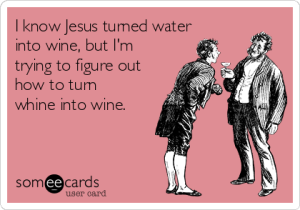
Whine into wine?
Or the more descriptive yet less catchy title: “The Best Wines To Pair With The Most Annoying Social Media Stereotypes“.
If you are even moderately active on any social media channel or platform, by definition, you will be engaging in a quasi-social manner with other humans. And we know that – as humans go – the spectrum ranges from amazing to annoying and everything inbetween. And as the world has gone mad for pairing wine with everything from moods to music, I present to you a useful guide to pairing everyone’s least favourite online stereotype with a wine to make it a bit more bearable.
The beauty of social media is the eclectic mix of individuals that make it up. That same attribute is also the root of the more annoying side. I often scroll through my Twitter or Facebook feed seeing the same predictable drivel from the same predictable people. Yes, of course you can unfollow or unfriend these tedious turds but even if you clear the offending individuals from your timeline, carbon copy replacements will pop up in time. So rather than spending inordinate amounts of time scrubbing my timeline, I have some wine to deal with the whining. I think some wines are particularly effective when dealing with specific types of bothersome bodies, so here is my definitive lists of wines to pair with all those eye-rolls:
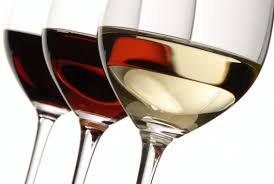
Wine makes everything better
- The Hashtag Harlots
Platform: Twitter / Instagram
Who are they? Characterized by promiscuous use of hashtags – hashtags everywhere – these are usually people who post to Instagram but also share directly to Twitter. Like mini SEO meltdowns, they’ll use hashtags for anything remotely related to what they’re posting as well as a few that have no bearing on the subject matter. E.g. “Yay, wine! #winewednesday #wine #merlot #riedel #alcie #OMG #vino #winecountry #WTF #BFF #crunked”
Wine: To cut through the dense thickness of the content matter, you will need a fresh, slightly acidic Sauvignon Blanc. Something to provide you with crisp relief when you’re suffocated by a flood of inane hashtags. - The Mommy Not-So-Bloggers
Platform: Facebook / Twitter
Who are they? Referring less to bloggers who actually produce helpful, often witty, content about the perils and pearls of motherhood and more to the meaningless moanings of the pregnant and the parental. By all means, share your precious moments on social media. That’s what it’s there for. We’re (mostly) all friends here. Just be mindful that if you’ve stripped your own identity of everything besides having produced offspring (i.e. when it’s all you ever talk about or everything you say is tied into it somehow), you can’t really get prickly when people accept that and only engage in terms of your maternal status.
Wine: Traditionally associated with maternal preferences, you’ll definitely want to avoid Chardonnay and rather go for something more exotic, but still spectacular and richly rewarding. My choice here would be a marvelous Roussanne or Semillon. While they’ll spend the foreseeable future exhausted and covered in child-manufactured fluids, you’ll still be footloose and infant free. - The TMI-ers
Platform: Facebook / Twitter
Who are they? Some people have messy lives. Drama. Intrigue. Like a 90’s soap opera. Most don’t, though. This doesn’t prevent a number of people from sharing their every tedious move in grotesque detail. It may involve a breakup. Or a bowel movement. You just never know. But you will be scarred for life.
Wine: This will likely be a heavy situation which will require a more serious wine. You’ll need to hit back with one of the big guns – a bold Cabernet Sauvignon with a near-sedative effect to assist your recovery. - The “Lifestyle” bleggers
Platform: Twitter
Who are they? My disdain for this lot is no real secret. “What’s that? You’re a lifestyle blogger? You were at the Ford Mustang launch? You drive a Chery QQ? Riiiiiight.” Everything is amazing, as long as it’s free and on the way to them. The princes/princesses of the press drop. You’ll find a lot more integrity in the structure of the wine you’re sipping while reading their latest rave review (not like they ever write any other type of review than “rave”, of course).
Wine: These call for something crisp, clear and contemporary to cut through the fog of BS – I’d go for an immaculate Cinsult or an honest Grenache. - The Candy Crush Saga inviters
Platform: Everywhere. They’re everywhere!!!!
There is no wine in the world that can help you deal with them. Only tequila. Or vodka. Preferably both.
The post Wines For The Worst Social Media Stereotypes appeared first on Incogvino.
]]>The post To Be (back) In The Pink appeared first on Incogvino.
]]>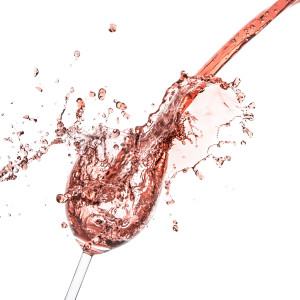
Rosé Rocks
For such a pretty, beautifully hued and generally cheerful-looking wine, rosé in South Africa has had a really strained relationship with consumers over the past decade or so. I’m not pointing fingers or laying blame but I suspect we’d all agree that this is largely due to two reasons: sugar and volume. I sincerely mean no offense to any producer but sugary sweet pink wines and pink wines in big boxes have – in the minds of many – set the tone for rosé consumption in SA. OBVIOUSLY not exclusively, but it’s a connotation that has been pretty dominant. Pair that perception with the idea that rosé is for girls, and you’ve essentially shoved your average rosé consumer into a pretty tightly defined box. Today though, I say to you, rejoice! For rosé is riding its own little wave of revolution – and we are all better off for it.
I may have mentioned previously my pained personal relationship with the rosy liquid; a definite case of “It’s not you, it’s me”. For years I avoided any and all wines which I even imagined had a hue of blush in it. This aversion was not because of anything wrong with rosé as such – not cultivar or style, not even sugar or bulk. It was all based on one week in 2006 where I was immersed in pink wine. As part of my honours degree, we completed a sensory training course at the Stellenbosch University Department of Food Science. The subject for that year was rosé wine. I spent a full week tasting, evaluating, studying, spitting, swirling and accidentally swallowing pink wine – from 8AM to 5PM. Five full days. The aim of the course was to teach us about the basic principles of sensory evaluation by training the group as a sensory panel. So we spent the days familiarising ourselves with the typical rosé characteristics, comparing each aroma and taste with the actual foodstuff, and then went into painfully detailed scoring processes. The wines were dead average. Dead boring. Dead awful.
I am not even moderately exaggerating when I tell you that for nearly 6 years I refused to even taste pink wines. At wine outings, I’d simply let the blush bottles pass me by. I wouldn’t even sniff it. I was traumatised. Academically the experience was fantastic. Practically, I was ruined.
Now, anyone who has ever read a word I’ve written has probably garnered that I pride myself on not being a judgmental wine drinker (or writer). Like everyone, I have my preferences, but I’ll try anything once and give all wines a fair chance to impress or inspire me. So when I ventured into the world of wine writing, I realised I could not be a credible wino if I ignore an entire style of wine. I reconciled with the pink monstrosity I’d so battled with for years and I can tell you now, I could not be happier.
Anyone who has paid a modicum of attention to what’s happening in your local wine shops will probably have noticed significant growth in contents of the pink shelves. Not only are there more rosé wines being produced, but styles are lighter, more Provençal and undoubtedly more delicious. SA has seen rosé consumption treble between 2007 and now – it is the fastest growing local wine category. And it’s not just here that the pinkies have been moving and shaking. Both USA and UK show double digit growth figures in the category and – shock! horror! – last year the richest of the rich in the New York Hamptons ran out of the precious pink nectar.
It’s a brilliant food wine (not sure if you should pair white or red with that meal? How about pink. Ding ding ding! We have a winner.). Pink MCC has also increased dramatically with winemakers exploring new styles and cultivars. And you know, the pink bubbles are often more expensive (even arguably, more delicious?) than their white counterparts.
Doubtless then that now is a terrific time to introduce SA’s first exclusive rosè wine competition. Conceptualised and brought to life by Clare Mack and her team at Spill Brand Communications, the Rosè Rocks competition was born. I was tickled pink (sorry…) to be invited to judge the competition. We were chaired by the brilliant Allan Mullins and the judging panel consisted of myself, Tinashe Nyamudoka (the head sommelier at The Test Kitchen), Neil Pendock, Malu Lambert (freelance food & wine journo) and Praisy Dlamini (winemaker at Zonnebloem). The judging went down yesterday and was completed as a blind tasting. All the results will be audited by Grant Thornton to ensure transparency and results the public can have confidence in.
We tasted around 160 odd entries and I was both impressed and slightly relieved to find that the majority of the entries were dry and off-dry. A relatively small amount of sweet pinks were entered. There were also a good amount of MCC entries (and what a treat it was to judge those). The winners will be announced at the awards ceremony on the 30th of September. As everything was tasted blind, not even the judges knows who came out tops. There will be a Top 10 announced for the still wines as well as one overall winner, and a Top 3 MCC wines and also one overall winner.
This may have been my first formal competition judging experience, but it was an excellent one. Scores were tallied, results discussed and the top wines were re-tasted to ensure that a deserving winner was picked. I’m counting the days until the embargo lifts and I can quiz the organizers about the identities of my personal favourite picks, because I will definitely be stocking up.
Most importantly, the interest in this competition has been immense, boding well for a summer of superb rosè sales and consumption alike. If you are someone who (like I was) simply does not rate rosè, I urge you to take a fresh look at what’s happening in this category. In fact, I will struggle to take you seriously as a wine drinker if you don’t at least try. And the idea that pink wines are for ladies is so last year. I’d refer you to the brosè movement and tell you that real men can pull off drinking pink drinks.
I’ll be spending my summer sipping away on some cool rosè, feeling pretty pleased to be back in the pink.
The post To Be (back) In The Pink appeared first on Incogvino.
]]>The post Tank & Barrel – Finally, a Cool Wine Club? appeared first on Incogvino.
]]>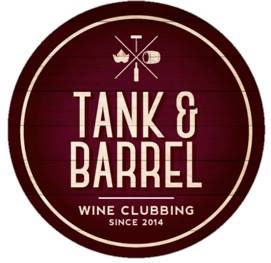
Wine Club for Cool Kids
I am not a fan of the traditional wine club format. I was duped into joining one ages ago – not a wine farm affiliated club, just a general wine-of-the-month type. It was horrific. I could put together a better selection than the ones I received by tossing glue-covered corks at a supermarket wine shelf and taking the first ones they stick to. It’s horrendous and nearly always “good idea, bad execution”. There are many reasons why this is the case, probably mostly because of badly sourced wines or budgetary constraints; if you want to offer people 6 or 12 wines of a certain quality, then there is a certain cost associated. And if you don’t happen to like the selection, you’ve just paid a bundle for a case or two you don’t care for. Thankfully, there are those among us who have wrestled with this problem on behalf everyone who has have suffered through the annoyance of being sold awful wine in bulk. Could it be that Tank & Barrel has managed the impossible? Have they created a cool wine club?
Tank & Barrel is a concept created by Alex Brodbeck and winemaker Francois Haasbroek. They wanted to take the mostly outdated idea of a wine club and drag it into the now by making both the process and offerings appealing. They’ve transformed the monthly wine club by breaking it down to its bare bones. Membership is R300 per month and for that you get two exciting, unusual and very much niche wines delivered to your door.
At first glance, the idea of two wines seems a bit underwhelming – we’re so used to these operations selling us multiples of 6. The reasoning behind it though is quite pragmatic: when you are subscribed to a wine club delivering 6 or more wines that you don’t specifically pre-select, the odds of you being stuck with wines you don’t like are quite high. Receiving only two bottles a month means if you don’t like what you get, you only have the one bottle to deal with. On the upside, if you DO like what you receive and you want to buy more, you can order as many as your heart desires directly from T&B. Win. Win.
In short, it’s an efficient monthly wine exploration service offering easy discovery of new wines and the anticipation of a new surprise each month.
The wines that feature in the club are definitely more off the beaten track than mainstream. Not entirely unknown or unacclaimed, of course, but not always the type of vino that you’ll pick up at your local supermarket liquor shop. They don’t stick religiously to the R150 per bottle average – some packs are made up of two wines worth a tad more than R300. The R150 per bottle price point is one where you often find a multitude of exciting wines. The T&B monthly selections so far have included (to name a few) Duncan Savage White, The Foundry Grenache Blanc, Vuurberg White, Overgaauw Cape Vintage Port AND Touriga Nacional, Fram Pinotage and Keermont Terrasse.
I was generously sent a “test box” (containing the Keermont Terrasse and the Fram Pinotage) to see if I – with my deeply ingrained dislike of wine clubs – would be sold on the idea of this one. Hand on heart: I am converted. Each month’s wines come with fantastic tasting notes, dripping with wit and information. An infographic styled image in the middle tells you all you need to know about the wine, including what it smells like, whether to decant or not, ideal pairings and serving temperature, what it looks like and where it’s from. Paragraphs dotted around it provide some extra info on the wine, the winemaking, the winemaker, region and soils and a very short and sweet “What WE think (Why we picked it)”. There’s also a superb Bad Pairing suggestion: for the Keermont it was “Don’t pair with people who think white wine can’t age” and for the Fram it read: “Creme Soda – Why spoil the world’s most noble drink with wine?”. Each delivery also has a little blurb on a wine-related topic, just to get you thinking about wine some more.
Tank & Barrel is, in some ways, still a work in progres. Their ‘To Do’ list for the future includes a new website, eCommerce and maybe even an app to snap together and streamline the whole thing. T&B as it is today is definitely a must-try. Ingeniously selected wines with brilliantly informative and entertaining tasting notes and the option of buying your favourites directly from them is an unconventional and convenient; it’s the most innovative way to discover new wine that I’ve come across.
Membership is R300 per month and (for now) you sign up for 6 months with a once-off payment of R1800. As the club grows, monthly payment options are likely to follow.
For more information (or to sign up!) you can find them on Facebook or check out their website.
The post Tank & Barrel – Finally, a Cool Wine Club? appeared first on Incogvino.
]]>The post Sediment – Wyn op die Kassie appeared first on Incogvino.
]]>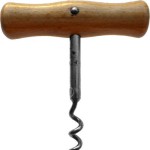
Sediment. Vrydae 17:30 op Kanaal 144
Tydens Desember 2014 het ek op Twitter kennis gemaak met die @SedimentTV rekening wat voorbrand gemaak het vir ‘n Afrikaanse KykNet reeks wat handel oor die plaaslike wyn wêreld. Op Vrydag 2 Januarie 2015 om 17:30 het die eerste episode die lug gesien, met ‘n gemengde ontvangs van die industrie af. Enige interessante nuuthede (veral dié wat ‘n bietjie omstredenheid veroorsaak) verdien om van naderby ondersoek te word. Daar is reeds drie episodes uitgesaai en Episode 4 wys vanaand. Incogvino het die PVR hierdie week laat les opsê en al drie episodes bestudeer, en ek is reg om my beskeie uitspraak te lewer.
Die debuut episode het ‘n redelike mengsel van kommentaar op sosiale media ontlok; van uitermatige hoë lofprysing tot ‘n paar bitsige aanmerkings, sommige blykbaar meer gefokus op die aanbieder en die produksiespan as die inhoud self. Dit verras my glad nie. Sommige mense lewer altyd hul opinies as blindelingse lofsangers en ander het maar net ‘n skerp tong. Daarom het ek eers besluit om nog ‘n paar episodes te beloer voordat ek my R0.02 ook in die pot gooi.
Ek moet bieg, ek het maar gesukkel met die eerste episode. Die bewerige kameraman het my na my Stiguron laat gryp om die seesiek gevoel af te weer. En ek het by tye gewonder of hulle betaal word vir elke keer wat die skoot verander: 5 sekondes op die wynmaker, 2 sekondes op ‘n uit-fokus wynglas, terug op die wynmaker vir 3 sekondes, dan 2 sekondes op die bottel en so aan, en so voort. Ook maar goed ek het gesit en kyk want ek het begin duiselig voel. Ek besef ek is nou baie krities oor aspekte van die televisiebedryf waarmee ek nie bekend is nie (my gebrek aan terminologie in die opsig verklik dit reeds) maar vir my as kyker was dit te opvallend. Dit daar gelaat, die kamerawerk het myns insiens baie verbeter in die derde episode, ‘n tendens wat ek hoop om deur die res van die reeks te sien.
JP Quickelberge as aanbieder het ook my opinie verdeel. Hy’s jonk, vriendelik en kom baie gemaklik voor: ‘n vars gesig uit die wynbedryf. Die toon van die reeks is ontspanne en sy interaksie met die wynmakers en almal wat op die program verskyn is informeel; minder soos ‘n onderhoud en meer net ‘n lekker gesprek. Sy dikwels gemaklike ‘ad-lib’ styl laat hom soms amper in die steek wanneer hy effens minder voorbereid voorkom. Ek verstaan dat om die insetsel 27 keer oor te skiet om die dialoog 100% te kry sal beslis die natuurlike gevoel van die gesprek heeltemal vernietig, maar in veral die eerste episode kon die aanbieding miskien ‘n bietjie meer afgerond gewees het.
Maar ek is nie net hier om krities te wees nie. Ek het nie KykNet genader met ‘n idee vir ‘n wyn program nie, ek het niemand oortuig dat ek ‘n goeie aanbieder vir so iets sal wees nie en ek is beslis nie op die kassie om te gesels oor wyn nie. Die konsep is fantasties en presies wat Suid-Afrika benodig om die wyn boodskap na sy mense te bring: wyn vir die massas in die gemak van hul sitkamer. Ek verneem die plase het betaal om deel te neem aan die program en ek is nie bekend met hoe die proses verloop het nie maar ek is verheug om te sien dat die fokus weg is van die tradisionele “groot”, meer kommersiële plase en meer op kleiner, boetiek landgoedere. Die plekke besoek tot en met Episode 3 sluit in Black Elephant Vintners, Môreson (terloops ook een van die Incogvino lede), Rickety Bridge, Clos Malverne, Middelvlei, Marianne, Klawer, Lutzville en Fryer’s Cove. JP en die span snuffel die stories agter die wyn uit, gesels met die wynmakers en meng ‘n goeie dosis wynkennis by, veral met die gebruik van die “Wynfeit” oomblikke (die visuele aanduiding van die wynfeite – ‘n klein logo wat op die skerm verskyn wanneer JP ‘n wynfeit uitlig – is afwesig in die eerste twee episodes maar duik dan op in episode 3. ‘n Klein redegerings foutjie miskien?) en geselsies met die wynmakers, nie net in die proelokale of kelders nie maar ook in die wingerd.
My grootste teleurstelling is dat daar nie meer gemaak word van die saamproe aspek van die program nie. Deel van die Sediment aanbieding is die geleentheid vir kykers om by die Wyn Klub aan te sluit en elke week 6 bottels van die wyne wat in daardie week se episode geproe word, te ontvang. By elke plaas wat besoek word, word een van die wyne in die pak geproe. Ten spyte van al die moeite wat met die wyn klub gedoen word, is dit baie maklik om die proe deel tydens die episode heeltemal te mis. ‘n Vinnige bekendstelling of visuele aankondiging van die saamproe sou nie te versmaaie gewees het nie. Hulle mis ook uit op ‘n reuse geleentheid om tydens die episode met die wyn klub lede op Twitter ‘n bietjie interaksie te skep, veral om die wyne wat geproe word. Hier by Incogvino weet ons darem al ‘n ding of twee van Twitter wynproeë. *kug*
Ek sluit af: dis ‘n uitstekende konsep. Ek haal my hoed af vir JP en almal wat dit uitgedink en deurgevoer het. Dit is hoogtyd dat die wynindustrie sien wat die jonger garde kan bemag en hoe gedrewe ons is om ons liefde vir wyn met die wêreld te deel. Nietemin, soms laat die vervaardiging en afronding die inhoud in die steek. Tog, soos ek opgelet het, blyk dit dat elke episode ‘n verbetering op die vorige een is en dit maak my hartjie bly. Ek gaan aanhou kyk, die PVR is gestel vir elke episode ingeval ek iets mis. Dit is beslis ‘n eerste vir SA televisie en vir die wyn industrie, en hopelik is dit ook nie ‘n laaste nie.
Sediment. Vrydae om 17:30 op KykNet, Kanaal 144
The post Sediment – Wyn op die Kassie appeared first on Incogvino.
]]>The post On Fining Agents and Clarity appeared first on Incogvino.
]]>
Wine – more than just fermented grape juice?
The Incogvino SuperFANS are all about the wine, and not just the tasting and the drinking. Being an inquisitive bunch, the following question popped up on our mailing list this week. “Egg protein? Milk protein? Is this normal?” with reference to a wine label with the aforementioned listed on it. This brought up the topic of fining agents and the question of not only what, but how, these processing aids are used in the making of wine. The science of fining agents can be quite complicated (some Chemistry 101: the molecules of fining agents have either positive or negative charges which affect the way they interact with the compounds in wine, which also have positive or negative charges. Science!) but the basics can be simple to understand. Here’s a quick clarification about fining agents in wine.
Let’s start by looking at why fining is important in the first place. When evaluating a wine, either formally for scoring or just looking at the liquid you’ve just poured into your glass, the preference is always for clarity. Clear wines are generally associated with quality and a healthy wine. Cloudiness could even indicate a fault in the wine, such as the growth of yeast or bacteira. Of course there are wines made in unfiltered styles which may present as hazy, but the majority of wines are filtered and clear.
Fining agents work to clarify wine by binding to the insoluble particles in wine which cause the murkiness. The process causes these substances to precipitate out of the wine in a solid state and settle at the bottom of the tank. Fining can also remove unwanted soluble compounds, such as phenols, polymerised tannins and other proteins as these will precipitate into an insoluble state upon binding with the fining agent. The clarified (fined) wine can then be separated from the insoluble material through a process called racking (removing the clear wine from the top and leaving the unwanted material at the bottom).
Now that we know why we use fining agents and how they work, let’s have a look at the types of compounds used in this process. Different fining agents are used depending on the type of wine. Some agents are more severe than others and can strip the wines of flavour and aroma compounds, so a balance between removing all unwanted substances and preserving desired ones is always important for winemakers to achieve. Some of these fining agents may seem fantastically odd, but keep in mind that they never actually form part of the wine – they are not food additives but rather processing aids – and precipitate out, separated completely from the wine that ends up in your bottle.
One of the most commonly used fining agents is bentonite, a type of clay. It is a very effective fining agent but over-fining can strip wine of flavour and colour and leave it with an earthy flavour. Egg white (albumen) is another popular choice for red wines as it has an additional affect of softening the tannins. Carbon (in the form of activated charcoal) is often used to remove off-colours and off-odours from wine. It is quite harsh and is not generally used as a typical fining agent, but rather for wines with significant problems. Casein (protein derived from milk), gelatine (an animal protein), isinglass (obtained from the swim bladders of fish), Kieselsol (silicon dioxide) and PVPP (poly-vinyl-poly-pyrrolidone) are other examples of agents, with varying specific uses to solve specific problems. Companies like Laffort are constantly researching alternative and improved fining agents, producing new products such as Vegecoll (a potato-derived protein) to clarify and stabilise wines.
A last note on fining agents is on the suitability of wines treated with various types of agents for vegetarians, vegans and people with food allergies. For most wine drinkers, the type of fining agent used is irrelevant as it is almost completely removed from the wine itself. After fining, clarification and stabilisation, wines are often filtered to remove the last possible particles and insoluble matter left. Trace amounts of fining agents (trace meaning on the absolute limit of detection – micro- or nanograms per litre) may remain in the wine and people with severely sensitive allergies may be affected. Strict vegans and vegetarians will also avoid wines who use animal-derived proteins (such as casein and albumen) as fining agents. VeganSA has a list of wine estates who produce vegan wines by using only non-animal derived fining agents.
The regulation around fining agents still seems a bit fuzzy. Declaring potential allergens on wine labels has become mostly standard practice, worldwide. Canada and the OIV (Organisation Internationale de la Vigne et du Vin) have recommended guidelines in place and some countries may be held to certain labelling practices when exporting wine. The general consensus seems to be that potential allergens should be listed, but many argue that if the filtering process efficiently removes these agents, listing them as additives on the labels may not be entirely accurate. It becomes even more confusing, as Europe applies “truth in labelling” law, the implication being if the label states eg. “Contains milk” (referring to casein) but the filtering process has removed all traces of casein, the winery is essentially breaking the law. This means a “better safe than sorry” approach isn’t really viable either.
Bottom line: don’t be afraid of fine(d) wines. The process may sound a bit strange (having made wine myself, I still find it counterintuitive to add a bucket of clay slush or some whipped egg whites to a tank of wine) but it’s all very scientific and the end result is healthy wines, with longevity and a crystal clear hue, making our favourite drink even more appealing.
For a more technical piece on the science behind fining, I recommend this Wineland technical post. You can also read more about the industry regulations and general good practice around fining agents and allergens in wine by checking out the SAWIS page and searching for the keyword “fining”.
The post On Fining Agents and Clarity appeared first on Incogvino.
]]>